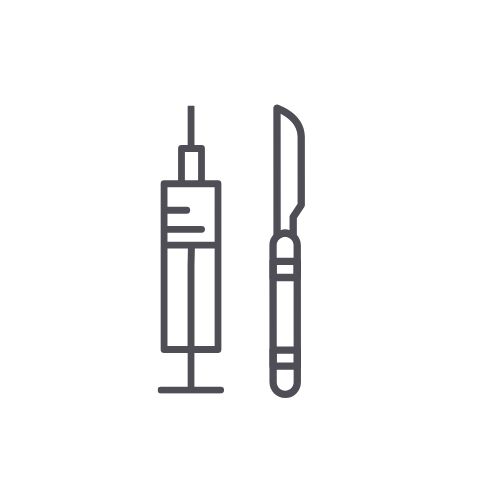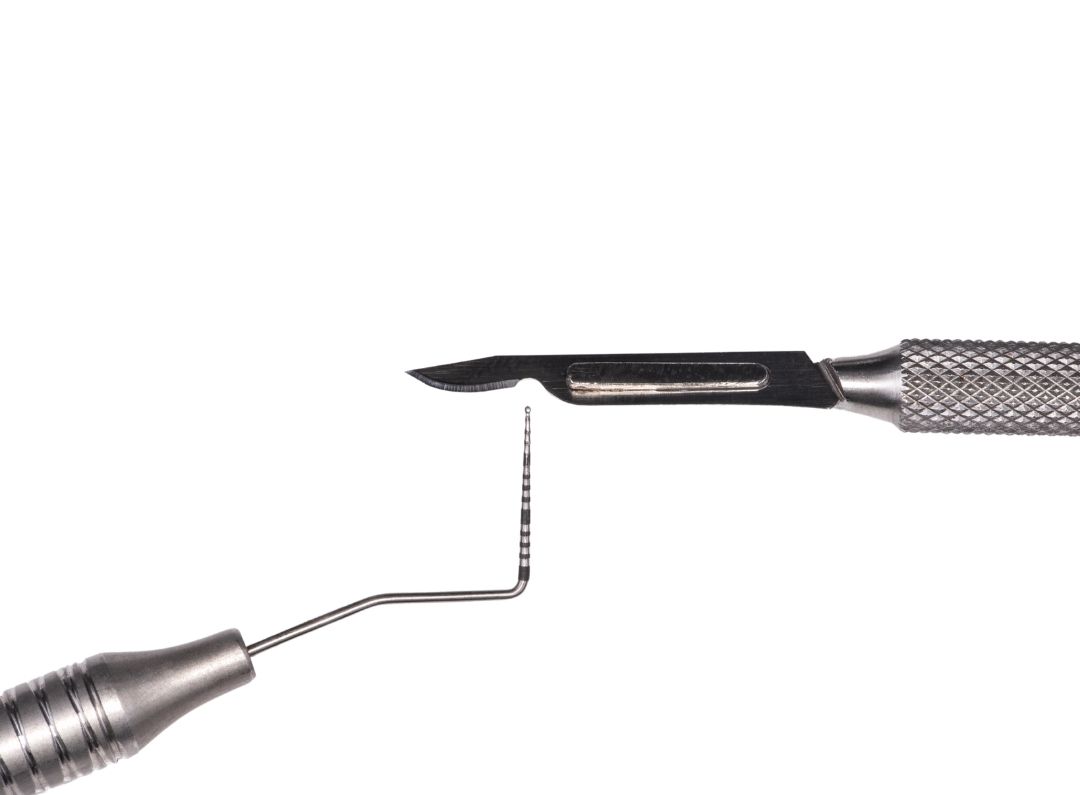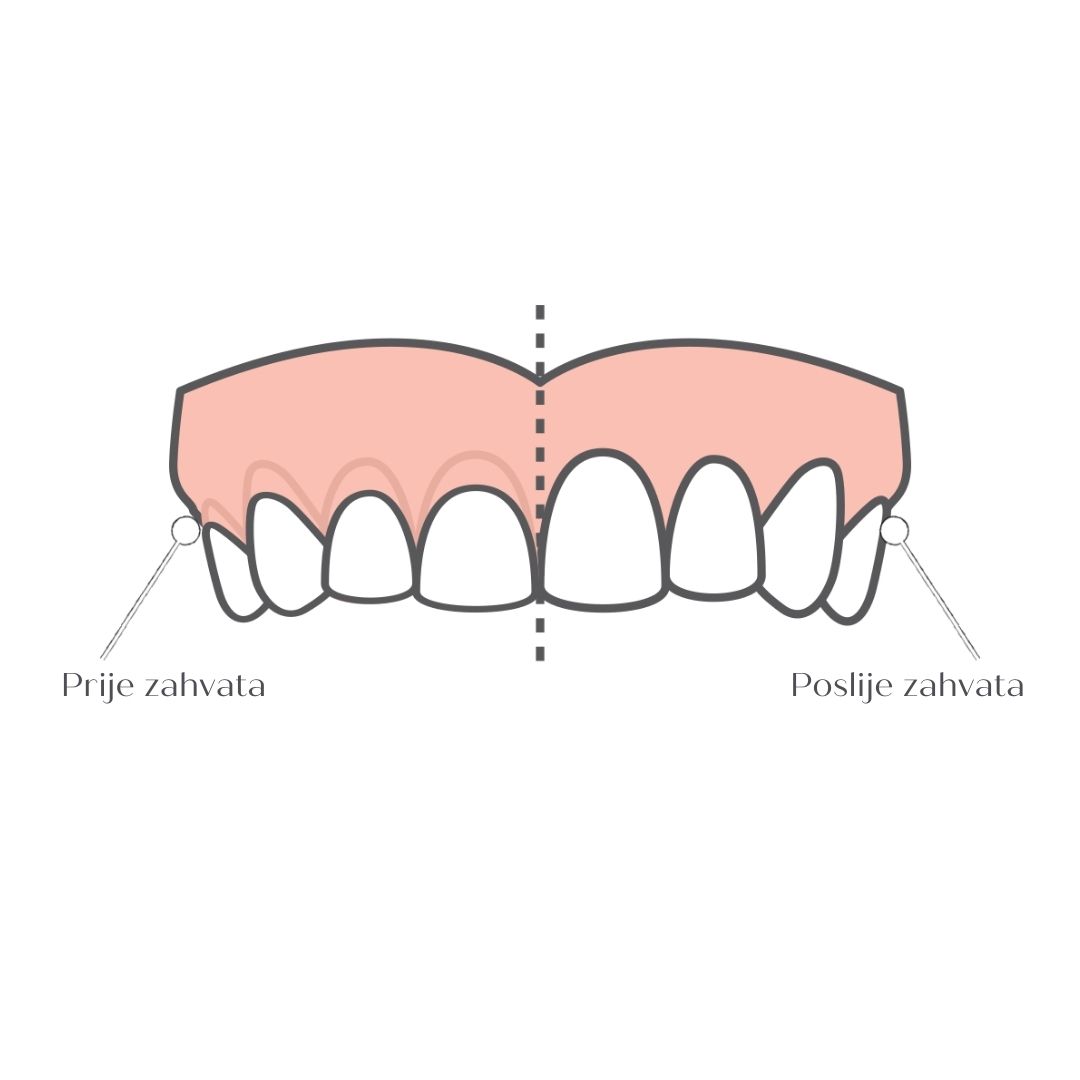The gums, or gingiva, play an important role in the attractiveness and evenness of a smile.
The gums should follow the smile line and should not be extremely visible or conspicuous.
You may not know this, but there are surgical techniques in dental medicine that have an aesthetic purpose. These include procedures that correct asymmetries and deformations of the gums, most often caused by genetics, trauma, or gum disease.
At the Petković Polyclinic, we place great importance on the harmony of teeth and gums, and the techniques we use to achieve it are gingivectomy and gingivoplasty.
Gingivectomy is a surgical method of removing diseased gums resulting from periodontal disease. Such periodontal pockets make it impossible to properly maintain oral hygiene because food and bacteria remain inside them.
Treatment of periodontal pockets is of medical importance since it removes potential hotspots where bacteria can accumulate.
Gingivoplasty is a surgical reshaping of the gum line around the teeth. It is most often performed for aesthetic purposes in order to make the gums look better and more natural, and the teeth bigger. It is used to correct genetic asymmetry and malformations. We fix the contours of the gums, creating a perfect ratio between the remaining gums and the crown of the tooth.
What is popularly known as the gummy smile represents a smile with a disproportionate relationship between the visible amount of teeth and gums, where there is no so-called red/white harmony.
The smile line is too high, and the gums are overly visible when talking or laughing, making the teeth appear shorter because they are partially covered by the gums.
The most common causes of a gummy smile are a short upper lip, excessive mobility of the upper lip, excessive tooth eruption, excessive development of the upper jaw, and abrasion or excessive wear of the dental structure.
At the Petković Polyclinic, we fix the gummy smile by removing excess gums, which immediately makes the teeth longer and bigger.
Before the procedure, it is very important to carry out a thorough cleaning of tartar in order to remove all plaque and tartar from periodontal pockets.
The procedure is performed under local anesthesia, so our patients can be sure that it is completely painless.
It is most often performed using a scalpel or laser.
After the treatment, the patient is prescribed painkillers. It is recommended to avoid crunchy and hard foods and to avoid brushing the wound for the first few days after the procedure.

“Gummy smile”

Painless procedure

45 min – 1 h









